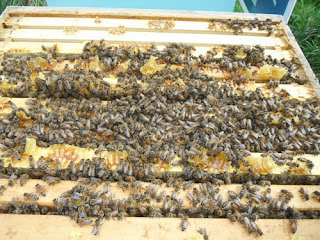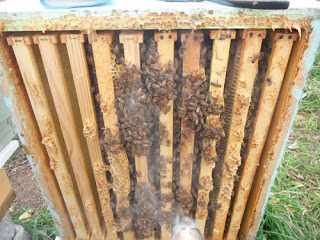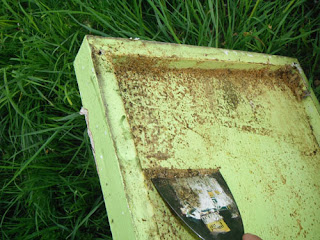The last few years I've worked glove less the majority of the time. Even when extracting honey I'd go without gloves. I'd wait until I got stung once or twice and then I'd put them on.
When not wearing gloves after getting stung the bees can smell the sting and the end result is most often more stings in exactly the same spot. Ouch!
I started by wearing light garden gloves. They fit pretty snugly so I found I could still get a good sense of feel. The bees could sting through it if they wanted to but most of the time they wouldn't. The gloves would reduce the smell of my flesh which I think helped.
 When swarm collecting though I've had some painful multiple stings if a clump of brushed bees would land on my hands. And bees would get inside my shirt sleeves.
When swarm collecting though I've had some painful multiple stings if a clump of brushed bees would land on my hands. And bees would get inside my shirt sleeves.So I finally purchased a pair of "swarm gloves". They fit well and I do get a sense of feel with them which is really important for me.
I've grown to 19 hives now and so when working that can add up to a fair number of stings in a day.
When harvesting honey this year I wore the garden gloves - but even after a few stings through the gloves the bees would sting the same spot again. That's when I'd keep multiple pairs so I could change them.
When I ran out I tried the swarm gloves.. and I really like them. The sleeve part covers the openings at the cuff of my shirt and they're tight enough and not too thick to feel.
Stings can't go through the gloves which was nice. And I note that I got five stings on the gloves while working one hive and every one of those stings was not from a bee but from a yellow jacket.
I found yellow jacket stings I'd itch and swell a bit whereas with a bee sting I wouldn't react at all other than a brief moment of pain.
So, why suffer? If the bees or pesky yellow jackets are stinging, pull on the gloves.





















